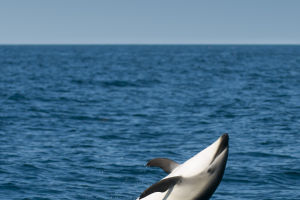The polar bear is the world's largest land carnivore and is also known as the white bear.
Despite its formidable appearance, it has a somewhat naive disposition. Although its skin is black, its appearance is usually white due to its transparent fur, which can also appear yellow or other colors. The polar bear is a powerful and formidable predator.
Polar bears have eyesight and hearing comparable to that of humans, but their sense of smell is incredibly sensitive, seven times stronger than that of canines.
They are also incredibly fast runners, with a top speed of 60km/h, which is 1.5 times faster than the world's 100m champion. Unfortunately, global temperature increases have led to the melting of Arctic ice floes, which has caused significant harm to polar bears and put them at risk of extinction. Human intervention is needed to help protect these magnificent creatures.
The polar bear is well adapted to survive in harsh environments, and its natural habitat is mainly in the Arctic Ocean, where there are ice floes. The polar bear prefers to live on the ice margins and pressure ridges where breakups and refreezing occur, providing excellent hunting grounds. As the ice melts and freezes, polar bears can travel up to 1,000 km north and south.
During the summer, they may remain on islands or coastlines with fixed ice, drift on ice currents, or become stranded on land where they must endure warmer weather.
Polar bears can also be found in low mountain forest meadows, where they live in areas with many concentrations of dens.
Winter dens can be as deep as the permafrost layer, and den chambers have plenty of grass to keep the bears warm. Before hibernation, a layer of silt is formed 25 cm above the overwintering chamber, and the exit is closed by soil and grass.
Polar bears are excellent swimmers and were once considered to be marine animals. They spend about 66.6% of their lives in a "resting" state, such as sleeping, lying down, or waiting for prey. The remaining 33.4% of their time is spent walking or swimming on land or ice, attacking prey, or eating.
Here are some interesting facts about polar bears:
1. Although polar bears are called "white bears," their fur is not actually white. It is hollow in the middle, which helps insulate and waterproof them. This structure reflects sunlight to their black skin underneath, which helps them absorb more heat.
Additionally, their paws are filled with dense, fine hair that allows them to walk steadily on the ice, making them well-adapted to living in cold polar regions.
2. Churchill, a town in northern Manitoba, Canada, is home to more polar bears than people. Every year from September to November, nearly 1,000 polar bears roam the area in search of food. The town's total population is only about 800 people.
3. When polar bears ask for food or other things from their companions, they greet each other with a nose-touching salute. If a bear is polite, it will be allowed to share food with its companion.
Polar bears can easily get their fur dirty when eating, so in the absence of water, they will stick their heads and bellies in the snow and clean up the stains by crawling on their bellies.


